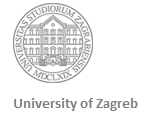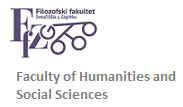Course title: Semantics of the English language
(until 2022/23)
Name of course coordinator: prof. dr. Milena Žic Fuchs
Name of lecturer: prof. dr. Milena Žic Fuchs
Number of credits: 6
Language of instruction: English
Semester: 5 (autumn)
Status: obligatory
Type of course: 4 periods, lecture
Prerequisites: Syntax (both) and Introduction to the Linguistics of the English language
Assessment method: Written
Course contents: The course introduces students to the complex issues of meaning 1) on the level of lexemes or words, 2) on the paradigmatic level, or the vocabulary structure and 3) to the relationship between semantics and syntax, or the relationships on the syntagmatic level. Basic traditional semantic concepts are discussed, such as homonymy, synonymy, polisemy, antonymy, as well as traditional theoretical approaches such as componential analysis and field theory. Particular attention is paid to the traditional approach to metaphor and metonymy, with an introduction to the new views of these language phenomena arising in cognitive semantics. The complexity of the relationship between semantics and syntax, or meaning on the syntagmatic level, is analyzed on the level of the sentence as well as smaller syntagmatic units such as collocations.
Objectives of the course: The objective of the course is to introduce students to the complexities of meaning phenomena, as well as to different theoretical frameworks, both traditional and contemporary.
Course schedule:
| Week | Topic |
| 1. | Orientation, syllabus. What is semantics? Short historical overview. Semantics and other related disciplines. What is meaning? The nature of linguistic meaning. Types of meaning. |
| 2. | Functions of language and their relation to meaning. Traditional terms in Semantics: Homonymy. Polysemy. Synonymy. |
| 3. | Is Semantics a science? Contemporary approaches: the scientific approach to meaning. Methods and possible approaches. |
| 4. | Methods of semantic analysis: Componential Analysis. Types of meaning relations. Triangles of meaning. Traditional and contemporary approaches to Componential Analysis. |
| 5. | Semantically related lexemes: organization on the paradigmatic level Semantic or lexical fields Antonymy |
| 6. | REVISION TEST 1 |
| 7. | Hyperonyms and hyponyms Taxonomies |
| 8. | Introduction to Cognitive Semantics The notion of prototype and its relevance for meaning Categorization |
| 9. | Scenes and frames Knowledge of language and knowledge of the world Categories: prototypes and schemas |
| 10. | Traditional and contemporary approaches to metaphor and metonymy. |
| 11. | Semantics and grammar. |
| 12. | Semantics and pragmatics. Use of corpora in semantic research. |
| 13. | Termin rezerviran za neku od tema. |
| 14. | Termin rezerviran za neku od tema |
| 15. | FINAL REVISION TEST |
Recommended reading (obligatory):
– Leech, G. N. (1978), Semantics. Penguin
– Lyons, J. (1981), Language and Linguistics. Cambridge University Press
– Palmer, F. R. (1976), Semantics – A New Outline. Cambridge University Press
– Žic Fuchs, Milena (1991), Znanje o jeziku i znanje o svijetu. Filozofski fakultet, Odsjek za opću lingvistiku i orijentalne studije
Recommended reading (optional):
– Lyons, J. (1981), Language, Meaning, Context. Fontana
– Lyons, J. (1977), Semantics, Vol. 1 and Vol. 2. Cambridge University Press



